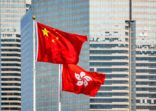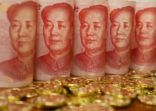In 2014, institutional investors accounted for only 29.5% of total assets.
Institutions preferred onshore fixed income funds, while retail investors showed more interest in convertible bond funds, guaranteed funds as well as products under the qualified domestic institutional investors scheme, the Morningstar China’s annual mutual fund report showed.
Analyst Niki Wu noted that the change of pattern only started to occur in the second half of last year, as she believed the A-share market plunge triggered instituional investors to become more conservative.
There were 2,700 mutual funds totaling RMB 8.42trn ($1.3trn) of assets under management in mainland China as of the end of last year, up nearly 85% or RMB 3.87trn from 2014.
Money market funds continue to show the strongest growth by value. They accounted for 53% of the assets. Mixed allocation funds were next (25%), followed by bond funds (10%).
All onshore mutual funds together hold RMB 1.83trn of A-shares, or 4.4% of the freely-traded shares on the Shanghai and Shenzhen bourses. The figure was slightly higher than in 2014, but still far from the peak of 26% in 2007.
About 45% of onshore funds are allocated to big-cap growth stocks, while another 30% are invested in mid-cap growth companies.
Fund industry statistics
For the full year 2015, the turnover rate for actively-managed equity funds hit 400%, higher than fixed income and mixed allocation funds, according to the report.
The number of mainland fund managers reached only 1,274, meaning each needs to manage an average of 2.88 funds.
The industry has a total of 107 fund management firms, with 13 newly-established last year.
The average fee level dropped slightly to 1.44% from 1.56% a year earlier. The most expensive ones were market neutral funds, aggressive allocation funds and QDII funds, which charged 4.35%, 3.61% and 2.73% respectively.
On the other hand, money market funds, short-term bond funds and commodity funds were among the cheapest, charging 0.6%, 0.66% and 0.82%, respectively.
















